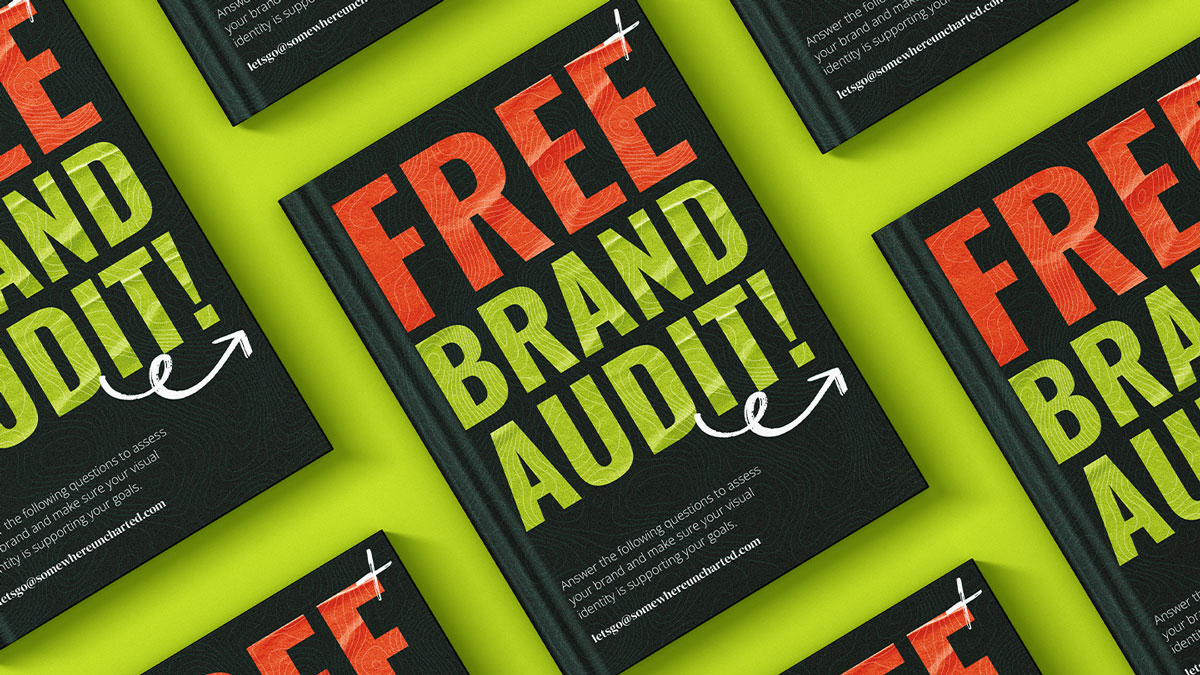How to conduct a Brand Audit on your Business using our free detailed DIY Template. Simply click, scroll and Download to start our easy-to-follow process.
You may be eager to dive into new logo possibilities or a tagline brainstorming session. But a good rebrand requires much more. It’s a deliberate and meticulous process that involves thought and reflection on every aspect of your brand. Who you are, what you do, why you exist, and much much more.
Above all, a rebrand can take time. It is a detailed process that must be done correctly from the beginning. You can’t just give a designer carte blanche or tell an agency you want something “new and fresh”, and then expect the right idea to just magically appear. You need to be strategic in your approach. One of the most crucial first steps in rebranding is a comprehensive brand audit. The exercise will generate the insights you need to conduct your rebrand the right way.
So, what is our Free Brand Audit?
Our Free brand audit is an exercise to help you understand your business as it is today. Before you move forward, you need to understand what works and what doesn’t, what can be improved and what needs to evolve. This will help you figure out its strengths, weaknesses, opportunities and threats. It’s only once you fully understand the big-picture, that you can identify the direction you need to travel.
It’s smart to do a brand audit before you reach out to a branding agency, as they will need to know this information to direct the transition. There are two key parts to a brand audit exercise; auditing your brand and its competition. This exercise helps you analyse your brand objectively, spotting opportunities to differentiate by analysing your competitor at the same time.
How to Conduct Your Free Brand Audit:
Here are the key steps we’ve highlighted from the process we use.
Step 1: Download your free template on how to carry out a Brand Audit by clicking Here and scrolling below to start the process.
Our free Audit Template includes all you should require to audit both your brand and the competition.
These templates include all of the questions conveniently presented in a format that you can distribute to the team carrying out your brand audit. You should also make it available to anyone who might have valuable insights about your brand and its Business.
Our experience has taught us that there can be roadblocks during a rebrand, mainly due to communication issues. To make your brand audit as effective as possible, answer all the questions thoroughly and honestly. Gather both insights and feedback from individuals at all levels of your business not just the management team. Come to a consensus regarding your findings and the things you want to carry forward into your new identity. This way everyone can feel assured that the information you’re working with is current and accurate.
Step 2: Audit your brand.
Answer all the questions outlined in the template. These questions cover three specific areas. See below:
- Current base identity – The foundational elements of your brand. Including your business values, competition, customers etc
- Current Verbal Identity – The way you speak about your brand. Including your tagline, value proposition, messaging and voice.
- Current Visual Identity – The way you look. Your Logo, colour and typography.
On the surface, all this might appear superficial. However, for brands that don’t have a well-articulated brand strategy, these simple questions can be hard to answer, that’s why it’s important to come to a final consensus after your questionnaires are complete. It pays to be honest; differing opinions and vague responses can cause major problems further into the process. Distribute the questionnaires and have your team answer the questions individually and honestly! Your goal is to get a sense of how your brand is currently perceived and performing.
Your Core Identity
This detail is the foundational element or elements that make up your brand.
- Business Name – As is
- What you do – Briefly describe your business.
- Brand Heart – Outline your purpose, vision, mission and values.
- Audience – Who are your target clients?
- Competition– Who are your top competitors? (Limit to 3)
- Key differentiators – What makes you different or better than your competition?
- Brand Personality – How do you describe your brand, as a company?
Your Verbal Identity
This is how you speak about your brand.
- Tagline – How do you sum up what you do in a single sentence?
- Value Proposition – What unique value do your customers get from purchasing your products or service?
- Key Messaging – What are your main selling points or message pillars?
- Voice – How we speak in our literature or on our website. How are we projecting ourselves?
Your Visual Identity
Audit your current identity and document what does or does not work with the following.
- Logo.
- Colour Palette – corporate colour scheme.
- Typography – Fonts used to convey your message.
- Visual elements – Photography or illustrations used.
Does your current identity reflect the business’s personality and align with your communications and values? More importantly, does it differentiate your brand from its competition?
Document your key takeaways from the exercise.
What or where are your biggest opportunities to improve? What key things would you like your new visual identity to communicate?
Step 3: Audit 2 or 3 competitor brands.
For this audit, we’re looking specifically at your competitors’ visual brands. To complete this exercise, review your key competitors one at a time and document your findings as you go. To get a sense of how each brand presents its identity, take a look at its website (especially its homepage), social media profiles, and any other relevant content.
Competitor Audit
Based on your audit, document the insights that help you design a strong and unique identity to compete.
Step 4: Collate your audit answers.
Your job here is not to gather surveys, and then dump the pile on your design team or brand agency. Instead, once you have your surveys completed, review them to look for similarities and discrepancies (particularly your internal audit). While the responses may differ greatly, they will provide incredible insight into how your current brand is succeeding or failing at communicating your identity. Large discrepancies are also a symptom of why a cohesive rebrand is so necessary.
Step 5: Gather your team and come to a consensus.
The goal of the audit is to come to a consensus about the handling of the rebrand and use the information gleaned as the foundation for the creative direction. So, gather your team, present the insights you’ve learned, and discuss what works, what doesn’t and what you can improve upon. For example, you might find that your Brand Heart is accurate, but your tagline is off. Or you may find that your logo is good, but your voice and tone don’t work well.
Step 6: Document your findings.
After you’ve discussed things with your team you should be able to fill out the creative brief that will guide your visual identity rebrand. You can then share this with whoever is doing the rebrand. This document will help make the rebrand stronger and more successful from the start.
Step 7: Take it to the next level; proceed with the rebrand.
Having completed your brand audit, you should now understand what you’re trying to achieve through your rebrand and feel confident in the process.
Completed your audit and need to engage an agency? contact us at: [email protected]
Your brand design specialist!
If you didn’t do so earlier download your free Template Here scrolling below to get started!


